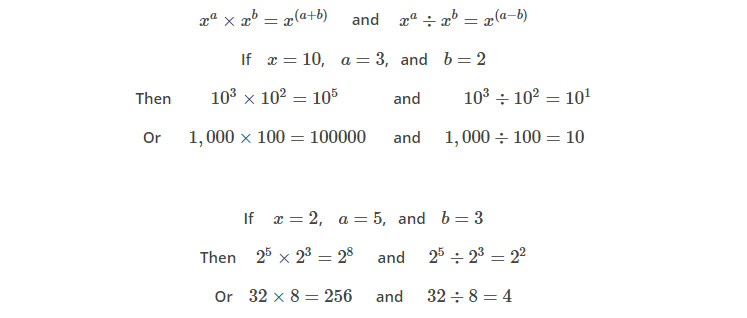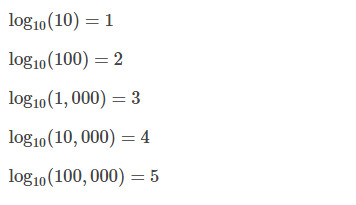Products Category
- FM Transmitter
- 0-50w 50w-1000w 2kw-10kw 10kw+
- TV Transmitter
- 0-50w 50-1kw 2kw-10kw
- FM Antenna
- TV Antenna
- Antenna Accessory
- Cable Connector Power Splitter Dummy Load
- RF Transistor
- Power Supply
- Audio Equipments
- DTV Front End Equipment
- Link System
- STL system Microwave Link system
- FM Radio
- Power Meter
- Other Products
- Special for Coronavirus
Products Tags
Fmuser Sites
- es.fmuser.net
- it.fmuser.net
- fr.fmuser.net
- de.fmuser.net
- af.fmuser.net ->Afrikaans
- sq.fmuser.net ->Albanian
- ar.fmuser.net ->Arabic
- hy.fmuser.net ->Armenian
- az.fmuser.net ->Azerbaijani
- eu.fmuser.net ->Basque
- be.fmuser.net ->Belarusian
- bg.fmuser.net ->Bulgarian
- ca.fmuser.net ->Catalan
- zh-CN.fmuser.net ->Chinese (Simplified)
- zh-TW.fmuser.net ->Chinese (Traditional)
- hr.fmuser.net ->Croatian
- cs.fmuser.net ->Czech
- da.fmuser.net ->Danish
- nl.fmuser.net ->Dutch
- et.fmuser.net ->Estonian
- tl.fmuser.net ->Filipino
- fi.fmuser.net ->Finnish
- fr.fmuser.net ->French
- gl.fmuser.net ->Galician
- ka.fmuser.net ->Georgian
- de.fmuser.net ->German
- el.fmuser.net ->Greek
- ht.fmuser.net ->Haitian Creole
- iw.fmuser.net ->Hebrew
- hi.fmuser.net ->Hindi
- hu.fmuser.net ->Hungarian
- is.fmuser.net ->Icelandic
- id.fmuser.net ->Indonesian
- ga.fmuser.net ->Irish
- it.fmuser.net ->Italian
- ja.fmuser.net ->Japanese
- ko.fmuser.net ->Korean
- lv.fmuser.net ->Latvian
- lt.fmuser.net ->Lithuanian
- mk.fmuser.net ->Macedonian
- ms.fmuser.net ->Malay
- mt.fmuser.net ->Maltese
- no.fmuser.net ->Norwegian
- fa.fmuser.net ->Persian
- pl.fmuser.net ->Polish
- pt.fmuser.net ->Portuguese
- ro.fmuser.net ->Romanian
- ru.fmuser.net ->Russian
- sr.fmuser.net ->Serbian
- sk.fmuser.net ->Slovak
- sl.fmuser.net ->Slovenian
- es.fmuser.net ->Spanish
- sw.fmuser.net ->Swahili
- sv.fmuser.net ->Swedish
- th.fmuser.net ->Thai
- tr.fmuser.net ->Turkish
- uk.fmuser.net ->Ukrainian
- ur.fmuser.net ->Urdu
- vi.fmuser.net ->Vietnamese
- cy.fmuser.net ->Welsh
- yi.fmuser.net ->Yiddish
dB (Decibel) Basics, Do You Really Understand What It Is?

dB (Decibel) is the most important and often used scale in the RF field, but it’s also understandably difficult and confusing for someone just being introduced to it.
Unfortunately, if you can’t thoroughly understand this important scale, then you will have tremendous difficulty to get your RF expedition moved on.
Dealing with numbers for gain, voltage, and power that mix dB, dBm, dBc, dBW, dBmW, watts, milliwatts, volts, millivolts, etc., often requires converting back and forth between linear values and decibel values.
I saw a lot of young RF fellows who ignored the importance of understanding dB, eventually realized that they need to learn this simple term well if they want to go further in the RF field.
This brief tutorial will help you clarify the difference between working with decibels and working with linear values.
Logarithm Basics
Using decibels involves working with logarithms, and this is the very minimum math knowledge you should have.
So we need to discuss logarithm before talking about dB.
Let’s start with this simple math that you’ve learned in the middle school:

People tend to make fewer mistakes when adding and subtracting numbers, so the advantage of logarithms is apparent.
Now let’s review these, per a base=10 log table:

Since 10 raised to the power of 3 is equal to 1,000, the base-10 log of 1,000 is 3 (log10(1,000)=3).
This is the basic law of logarithms:

Now let’s go further with an example:
You are designing a simple receiver as follows:
For the reason of easy comparison, we’ll work with linear values first, and all gains/losses are related to ‘voltage’.

*Antenna Gain: 5.7
*Low Noise Amplifier (LNA) Gain: 7.5
*Mixer Gain: 4.6
*IF Filter Gain/Loss: 0.43
*IF Amplifier Gain: 12.8
*Demodulator Gain: 8.7
*Audio Amplifier Gain: 35.6
The total gain in linear value from antenna to the last stage audio amplifier output is:

It would be very difficult to remember these numbers but, unfortunately, you need to handle a lot of numbers in the RF field. So we need to find an easier way to deal with them.
Now let’s take an easier route using the same receiver. Instead of using linear values, we transfer them to logarithms.
*Antenna Gain: 5.7 (log 5.7 = 0.76)
*Low Noise Amplifier Gain: 7.5 (log 7.5 = 0.88)
*Mixer Gain: 4.6 (log 4.6 = 0.66)
*IF Filter Gain/Loss: 0.43 (log 0.43 = -0.37)
*IF Amplifier Gain: 12.8 (log 12.8 = 1.11)
*Demodulator Gain: 8.7 (log 8.7 = 0.94)
*Audio Amplifier Gain: 35.6 (log 35.6 = 1.55)
*Total Gain: 335,229.03 (log 335,229.03 = 5.53)

The total gain, 335,229.03 in linear value, equals 5.53 if transferred to logarithm.
Instead of using multiplications, you can add together those individual gains to get the total gain, after being transferred to logarithms first, with a much smaller and shorter value. Isn’t that much easier to calculate and remember?
The only issue you may not like much is you need to get familiar with logarithm calculation but, believe me, you’ll soon be quite good with this powerful function and enjoy using it every day.
Never try to avoid using it if you are really serious about working in the RF field.
As a matter of fact, you’ll not be using linear values that much any more once you work in the RF field for 1 or 2 years.
The only thing you will be using is ‘dB’.
dB Basics
Let’s continue to this useful term ‘dB’, something you’ll use every moment when you work on RF projects.
Voltage Gain in dB:
We need to talk about voltage gain and power gain separately and put them together to see if they are the same thing.
Let’s start with voltage gain first:
A decibel (dB) is defined as 20 times the base-10 logarithm of a ratio between two voltage levels Vout/Vin (voltage gain, in other words).

All gains greater than 1 are therefore expressed as positive decibels (>0), and gains of less than 1 are expressed as negative decibels (<0).
Let’s find the gain in dB for the previous receiver example.

*Antenna Gain: 5.7 (20log 5.7 = 15.1)
*Low Noise Amplifier Gain: 7.5 (20log 7.5 = 17.5)
*Mixer Gain: 4.6 (20log 4.6 = 13.3)
*IF Filter Gain/Loss: 0.43 (20log 0.43 = -7.3)
*IF Amplifier Gain: 12.8 (20log 12.8 = 22.1)
*Demodulator Gain: 8.7 (20log 8.7 = 18.8)
*Audio Amplifier Gain: 35.6 (20log 35.6 = 31.0)
*Total Gain: 3.35229E+05 (20log(3.35229E+05) = 110.5)

Again, you can add together those individual gains to get the total gain in dB.
Power Gain in dB:
Before talking about power gain in dB we need to know the relationship between voltage and power.
We all know, for a sine wave V volts applied to a resistor load R ohms,

Most RF circuits use 50 ohms as source and load impedance, so if the voltage across the resistor is 7.07V(rms), then

We can define the power gain in dB below:
A decibel (dB) is defined as 10 times the base-10 logarithm of a ratio between two power levels Pout/Pin (power gain, in other words).

Confused with the dB values between voltage gain and power gain? Things will come clear if you read on.
Let’s go back to see the previous example again:
*Antenna Gain: 5.7
*Low Noise Amplifier (LNA) Gain: 7.5
*Mixer Gain: 4.6
*IF Filter Gain/Loss: 0.43
*IF Amplifier Gain: 12.8
*Demodulator Gain: 8.7
*Audio Amplifier Gain: 35.6
All gains/losses are related to ‘voltage’. The linear value of antenna voltage again is 5.7 (15.1 dB) and the power gain would be:


*Antenna Gain: 32.49 (15.1 dB)
*Low Noise Amplifier Gain: 56.25 (17.5 dB)
*Mixer Gain: 21.16 (13.3 dB)
*IF Filter Gain/Loss: 0.18 (-7.3 dB)
*IF Amplifier Gain: 163.84 (22.1 dB)
*Demodulator Gain: 75.69 (18.8 dB)
*Audio Amplifier Gain: 1267.36 (31.0 dB)
*Total Gain: 1.12379E+11 (110.5 dB)
However, the only reason you might use voltage gain is because you can easily measure voltage using oscilloscope, but it is impractical to measure voltage when the radio frequency is higher than 500 MHz.
Because you may have accuracy issue by using oscilloscope to measure radio frequencies.
I am not saying oscilloscope is not useful, I just said I don’t measure RF voltage using oscilloscope if there is not a specific reason for this need.
Over 90% of the time, I use spectrum analyzer to measure RF signal.
This is a subject for another post.
A gain value you see in datasheet is always related to power gain in dB, not a voltage gain or linear value.
We will sum up this article with a simple example:
An amplifier with a gain of 15 dB:

Since 15 dB=10log(Pout/Pin)
The power gain in linear value is:
Pout/Pin=10(15/10)=31.62
And since 15 dB=20log(Vout/Vin)
The voltage gain in linear value is:
Vout/Vin=10(15/20)=5.62
And, 5.622=31.62
I hope you’ve learned something from this article. If you already knew clearly everything I’ve mentioned here, then, congratulations, you are on the right track to the RF field.
If you are still confused after reading this article for a couple of times, then don’t be concerned, you are not alone, just take a deep breath and read it step-by-step again, or come back after reading more articles from this blog.
Sooner or later you’ll master ‘dB‘ without any difficulty.
Below are a few images that I think you’ll find them helpful:












You may also like
dBm, µV, dBµV, mV, dBmV Basics: What Are They & How To Convert Between Them?
dB, dBm, dBW, dBc Basics: Can You Clearly Tell Their Difference?
Noise Figure (NF) Basics: What Is It & How To Use It To Help You Design A Receiver – Single Stage.

